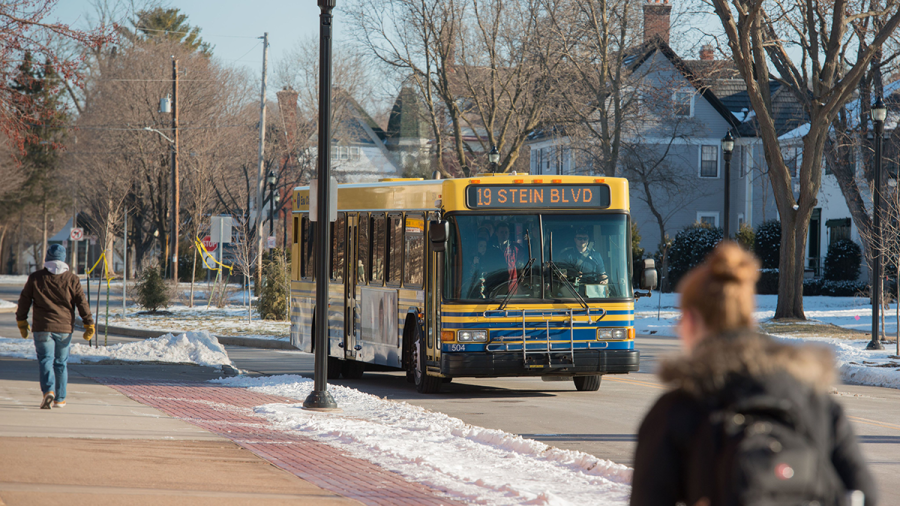
Eau Claire Transit has switched to TransLoc, a bus tracking app that shows all active routes, the location of buses and gives an estimated arrival time to bus stops near the user.
The same features can also be accessed by computer through the Eau Claire Transit webpage.
Tina Deetz is the new transit manager for Eau Claire Transit and has been overseeing the switch to TransLoc.
“There are GPS pucks in all buses that track the bus,” Deetz said.
While there are posters around campus advertising the new app and people have been using the new app, this is not the first bus-tracking app that Eau Claire has used.
Deetz said the process of setting up TransLoc started last summer under the oversight of the previous transit manager.
“We went out for bid for a new bus tracking system when we learned DoubleMap would be ending,” Deetz said.
Eau Claire Transit previously used the DoubleMap app. According to the Indianapolis Business Journal, Ford Motor acquired Journey Holding, the corporation that owns and manages DoubleMap, in 2019.
“Ford Smart Mobility LLC plans to integrate Journey’s products and technologies with Durham, North Carolina-based TransLoc, a Ford-owned provider of technology products for public and private transit operations,” Jeff Newman wrote for the Indianapolis Business Journal.
Double Map is still available in the app store and Ford Motor has not announced any plans to discontinue the app. DoubleMap’s website URL redirects to TransLoc’s website.
“We do miss how easy and convenient DoubleMap was, but we do not have an option any longer to use the service,” Deetz said.
Eau Claire Transit had to move on, with or without the bus tracking technology.
“TransLoc was the only bus tracking company that responded to our bid,” Deetz said.
TransLoc, according to their webpage, describes their company as providing “mobility solutions at the speed of life.”
The process of fully integrating TransLoc into Eau Claire has not been finished yet, Deetz said. There have been many difficulties in implementing TransLoc.
Deetz said they have had problems with the automated passenger counts (APCs), automated passenger announcements (APAs), tablet functionality and internal sign displays connecting with the front head signs.
“It almost seems anything that could go wrong with all the technology communicating has gone wrong, a TransLoc employee stated this morning. We are working through the problems with TransLoc,” Deetz said.
Though there have been some problems behind the scenes, Deetz said they are working hard to make this a good tracking system for the community. Deetz has even used the app herself.
“The app itself is currently working well,” Deetz said. “There are some features I like better than DoubleMap and some I would like to make better.”
More information on the Eau Claire bus system can be accessed on the Eau Claire Transit webpage.
More information on TransLoc can be accessed through a separate webpage.
Heffernan can be reached at hefferjs9199@uwec.edu.
https://www.spectatornews.com/campus-news/2023/02/eau-claire-transit-switches-bus-tracking-services/

